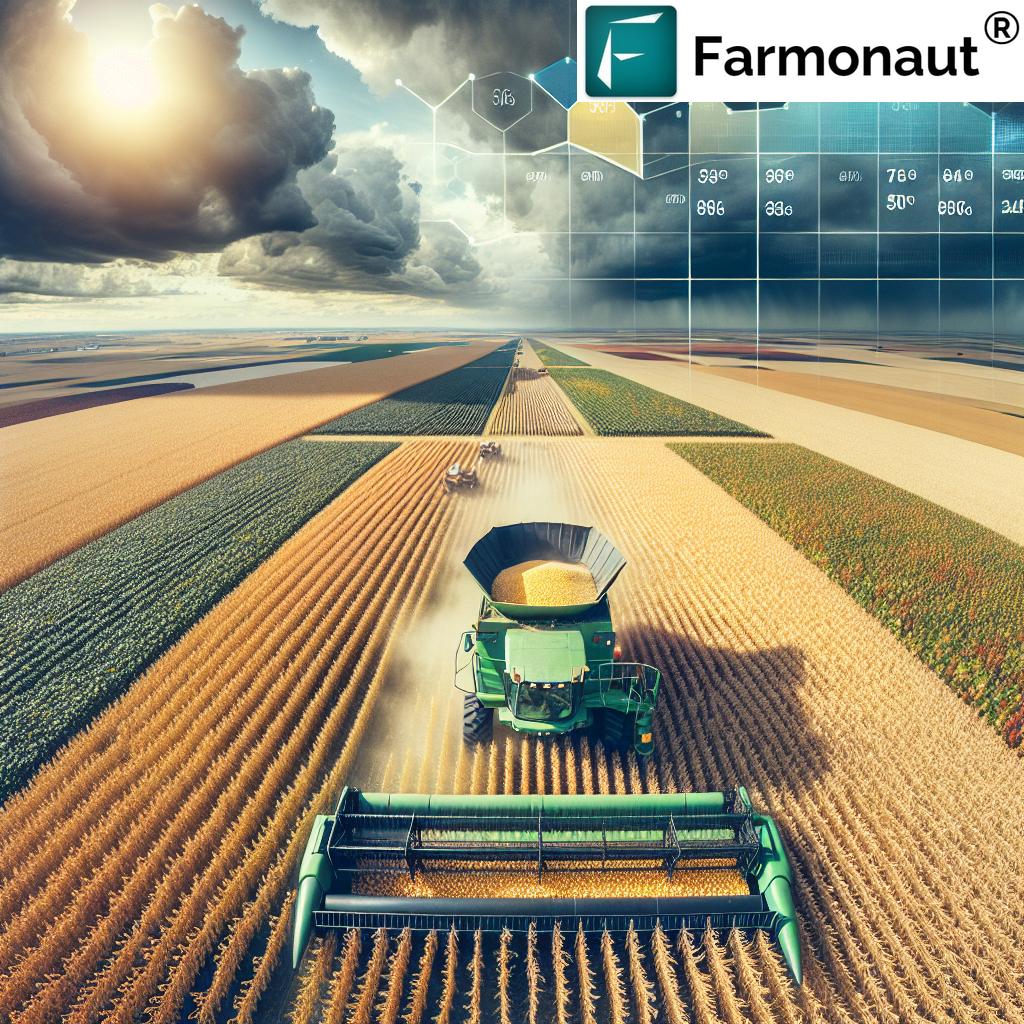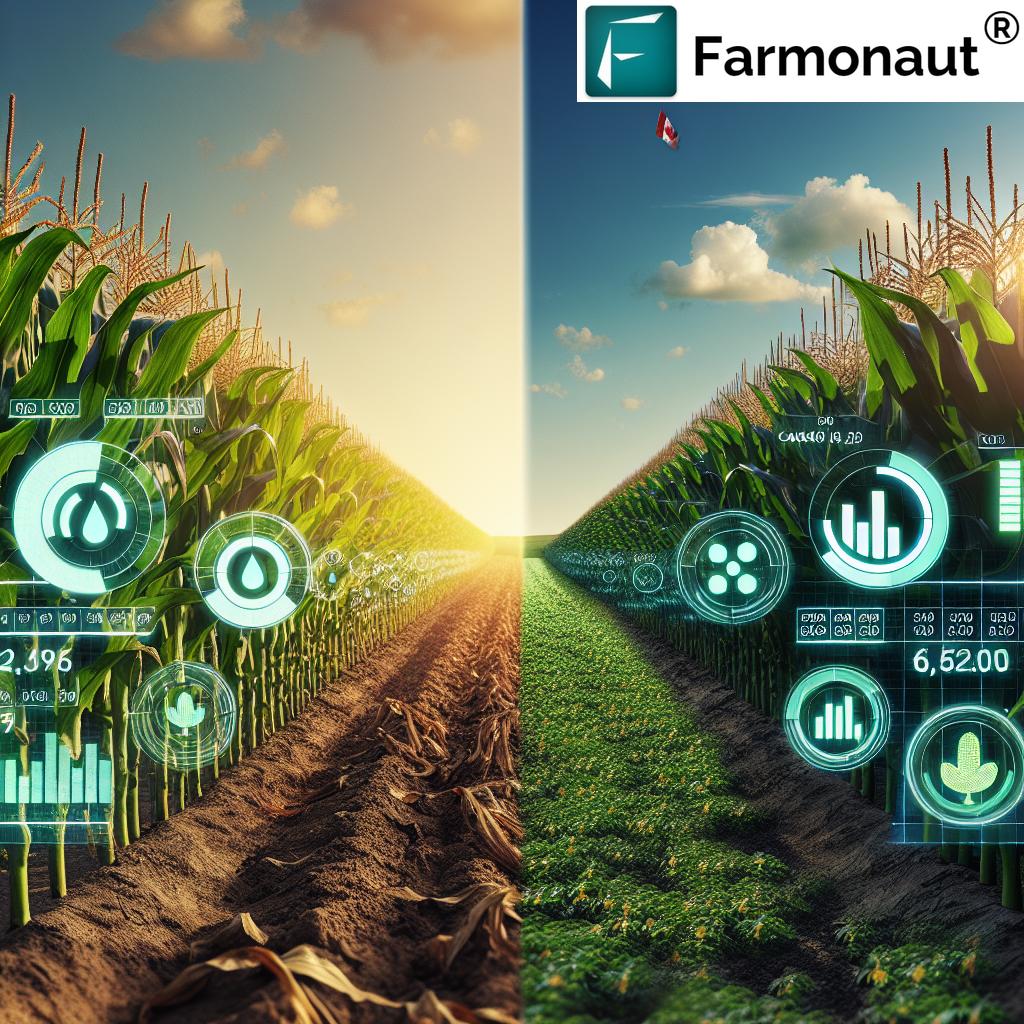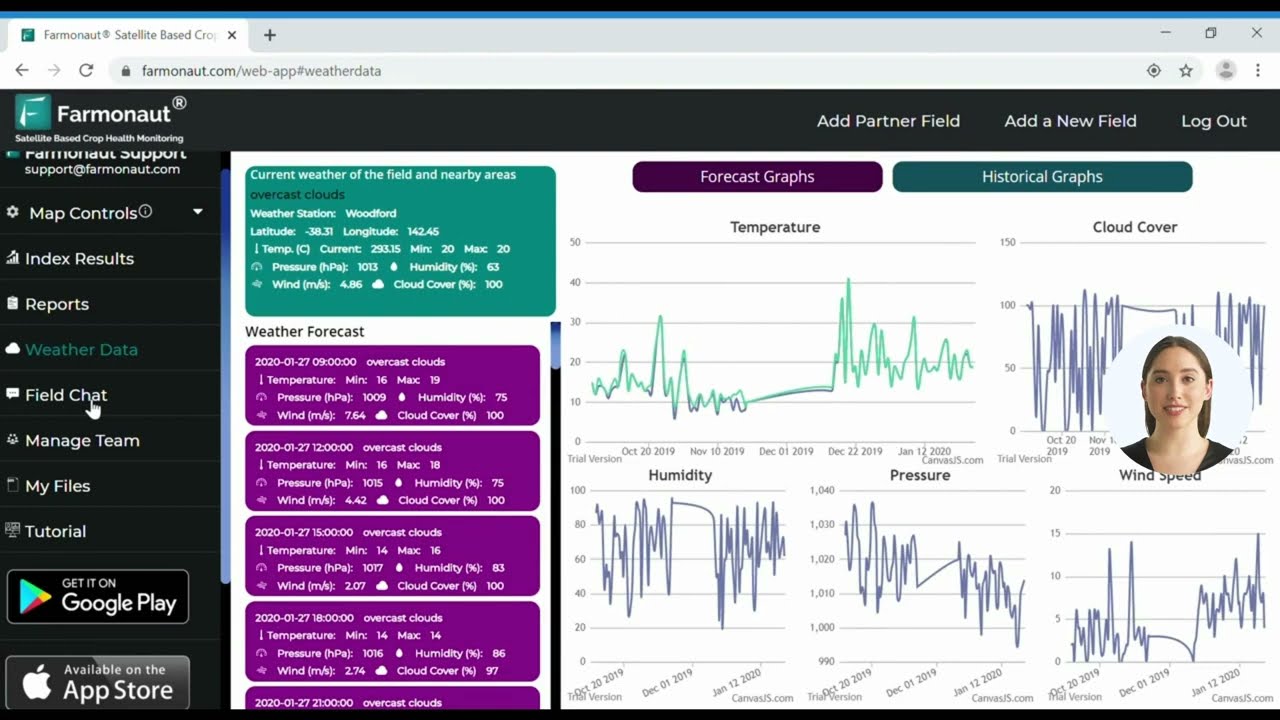Maximizing Crop Yields: Canadian Farmers’ Guide to Navigating Soybean and Corn Markets in Uncertain Weather

“Canadian soybean production has expanded to cover over 2.5 million hectares across Ontario and Quebec.”
Welcome to our comprehensive guide on navigating the dynamic world of soybean and corn markets in Canada. As we delve into the intricacies of crop yield optimization and weather impacts on farming, we’re here to equip Canadian farmers with the knowledge and strategies needed to thrive in an ever-changing agricultural landscape.
The Evolving Landscape of Canadian Agriculture
In recent years, we’ve witnessed a significant transformation in Canadian agriculture, particularly in the realms of soybean and corn production. The expansion of soybean cultivation across Ontario and Quebec has been nothing short of remarkable, reflecting the crop’s growing importance in our agricultural sector. Meanwhile, corn remains a staple crop, with its production deeply ingrained in our farming traditions and economic fabric.
As we navigate these markets, it’s crucial to understand the interplay between various factors that influence crop yields and market dynamics. From the harsh winters of the Prairies to the humid summers of Ontario, weather patterns play a pivotal role in shaping our agricultural output. Add to this the complexities of global markets, currency fluctuations, and evolving consumer demands, and we find ourselves in a landscape that requires both resilience and adaptability.
Soybean Production in Canada: A Growing Success Story
The rise of soybean production in Canada is a testament to our farmers’ ability to adapt and innovate. Traditionally confined to the southwest regions of Ontario, soybeans have now found their way into fields across Quebec and even parts of the Prairies. This expansion has been driven by several factors:
- Development of cold-tolerant varieties
- Increasing global demand for soybeans
- Attractive market prices
- Crop rotation benefits
As we continue to push the boundaries of soybean cultivation, it’s essential to leverage advanced technologies to maximize yields. This is where precision agriculture comes into play, offering tools that can revolutionize how we approach soybean farming.
Farmonaut’s satellite-based crop monitoring system is an excellent example of how technology can empower farmers. By providing real-time insights into crop health and field conditions, this tool enables us to make data-driven decisions that can significantly impact yields.
Explore Farmonaut’s web app for satellite-based crop monitoring: 
Corn: A Cornerstone of Canadian Agriculture
While soybeans have been making headlines, corn remains a vital crop in Canadian agriculture. Ontario and Quebec lead the way in corn production, with the crop playing a crucial role in both livestock feed and various industrial applications. The corn market, however, comes with its own set of challenges and opportunities:
- Sensitivity to weather fluctuations
- Competition from global producers
- Evolving demand in ethanol and food industries
- Impact of currency exchange rates on exports
To navigate these complexities, Canadian corn farmers are increasingly turning to sustainable farming practices and precision agriculture technologies. These approaches not only help in optimizing yields but also in managing resources more efficiently.
Farmonaut’s AI-powered advisory system, Jeevn AI, is a game-changer for corn farmers. By analyzing satellite data and other inputs, it provides personalized recommendations for crop management, helping farmers make informed decisions throughout the growing season.
Download Farmonaut’s mobile apps for on-the-go crop monitoring:
Weather: The Great Equalizer in Agriculture
If there’s one factor that keeps Canadian farmers on their toes, it’s the weather. From unexpected frosts in the Prairies to summer droughts in Ontario, weather patterns can make or break a growing season. In recent years, we’ve seen how climate change is introducing new challenges:
- More frequent extreme weather events
- Shifting precipitation patterns
- Extended growing seasons in some regions
- Increased pest and disease pressures
Adapting to these changes requires a multi-faceted approach. Crop diversification, improved water management, and the use of weather-resistant crop varieties are all strategies that Canadian farmers are employing. However, perhaps the most powerful tool in our arsenal is data.
“Global corn production reached a record 1.17 billion metric tons in 2021, with Canada contributing significantly.”
By leveraging advanced weather forecasting and crop monitoring technologies, we can make more informed decisions about planting dates, irrigation schedules, and harvest timing. Farmonaut’s platform integrates real-time weather data with satellite imagery, providing a comprehensive view of field conditions and potential weather impacts.
Navigating Market Dynamics: A Balancing Act
Understanding market trends is crucial for Canadian farmers looking to maximize their returns. The soybean and corn markets are influenced by a complex web of factors:
- Global supply and demand fluctuations
- Trade policies and international relations
- Currency exchange rates
- Shifts in consumer preferences
- Emerging market opportunities
Staying informed about these trends allows farmers to make strategic decisions about crop selection, planting acreage, and marketing strategies. It’s not just about growing crops; it’s about growing the right crops at the right time for the right markets.
Farmonaut’s platform goes beyond crop monitoring by providing insights into market trends and demand forecasts. This holistic approach helps farmers align their production with market needs, potentially leading to better prices and reduced waste.
Precision Agriculture: The Future of Farming
As we look to the future, precision agriculture technologies are poised to play an increasingly important role in Canadian farming. These tools offer the potential to:
- Optimize resource use (water, fertilizers, pesticides)
- Improve crop yields and quality
- Reduce environmental impact
- Enhance farm profitability
From GPS-guided machinery to drone-based imaging, the options are expanding rapidly. However, one of the most accessible and powerful tools is satellite-based crop monitoring. This technology provides a bird’s-eye view of crop health and field conditions, allowing for targeted interventions and more efficient resource allocation.
Explore Farmonaut’s API for custom agricultural solutions: Farmonaut API
For developers looking to integrate satellite data into their applications: API Developer Docs
Sustainable Farming Practices: A Win-Win Approach
As global agricultural demand continues to rise, so does the pressure to adopt more sustainable farming practices. Canadian farmers are at the forefront of this movement, implementing techniques that not only benefit the environment but also improve long-term productivity and resilience:
- Conservation tillage
- Cover cropping
- Integrated pest management
- Precision fertilizer application
- Water conservation techniques
These practices not only help in preserving soil health and biodiversity but can also lead to cost savings and improved crop quality. Moreover, as consumers become increasingly conscious of the environmental impact of their food choices, sustainable farming practices can open up new market opportunities.
Farmonaut’s platform supports sustainable farming by providing detailed insights into resource usage and environmental impact. By tracking metrics like water consumption and carbon footprint, farmers can make more sustainable choices while still maintaining profitability.
Canadian Soybean and Corn Market Comparison
| Aspect | Soybeans | Corn |
|---|---|---|
| Growing Season | 90-120 days | 100-180 days |
| Major Production Regions | Ontario, Quebec | Ontario, Quebec, Manitoba |
| Estimated Annual Yield (metric tons) | 6-7 million | 13-14 million |
| Average Market Price (CAD/bushel) | $13-$15 | $6-$8 |
| Weather Impact Factors | Moderate drought tolerance | Sensitive to heat and drought |
| Global Market Position | 7th largest exporter | 11th largest producer |
| Precision Agriculture Technologies | Satellite monitoring, variable-rate seeding | GPS-guided planting, drone imaging |
| Sustainability Practices | Crop rotation, reduced tillage | Cover cropping, precision fertilization |
| Market Challenges | Trade tensions, currency fluctuations | Ethanol demand, feed market competition |
| Future Outlook | Expanding acreage, rising global demand | Stable production, focus on value-added products |
Strategies for Success in Uncertain Times
As we navigate the complexities of modern agriculture, several strategies can help Canadian farmers maximize their success:
- Diversification: Spreading risk across multiple crops and markets
- Continuous Education: Staying informed about new technologies and market trends
- Data-Driven Decision Making: Leveraging precision agriculture tools for informed choices
- Risk Management: Utilizing futures contracts and crop insurance
- Sustainability Focus: Adopting practices that ensure long-term viability
- Collaboration: Participating in farmer networks and cooperatives
By implementing these strategies and staying adaptable, Canadian farmers can position themselves for success in the ever-changing world of agriculture.
Conclusion: Embracing the Future of Canadian Agriculture
As we look to the future, the Canadian agricultural sector stands at a crossroads of challenge and opportunity. The soybean and corn markets continue to evolve, driven by global demands, technological advancements, and environmental considerations. By embracing precision agriculture technologies, sustainable farming practices, and data-driven decision-making, Canadian farmers can not only navigate these uncertain times but thrive in them.
Remember, success in modern agriculture is about more than just growing crops; it’s about growing smarter. With tools like Farmonaut’s satellite-based crop monitoring and AI advisory systems, Canadian farmers have powerful allies in their quest for optimized yields and sustainable practices.
As we continue to adapt and innovate, the future of Canadian agriculture looks bright. By staying informed, embracing technology, and working together, we can ensure that our soybean and corn industries remain competitive on the global stage while contributing to a more sustainable and food-secure future for all.

Farmonaut Subscriptions
Frequently Asked Questions
Q: How can Canadian farmers best prepare for uncertain weather conditions?
A: Canadian farmers can prepare for uncertain weather by diversifying crops, implementing water management systems, using weather-resistant varieties, and leveraging precision agriculture technologies for real-time monitoring and decision-making.
Q: What role does precision agriculture play in maximizing crop yields?
A: Precision agriculture plays a crucial role by providing data-driven insights for optimized resource use, targeted interventions, and improved decision-making, ultimately leading to higher yields and reduced environmental impact.
Q: How are global market trends affecting Canadian soybean and corn production?
A: Global market trends influence Canadian production through fluctuating demand, price volatility, and trade policies. Staying informed about these trends helps farmers make strategic decisions about crop selection and marketing strategies.
Q: What sustainable farming practices are most effective for Canadian soybean and corn farmers?
A: Effective sustainable practices include conservation tillage, cover cropping, integrated pest management, precision fertilizer application, and water conservation techniques. These practices improve soil health, reduce environmental impact, and can lead to long-term profitability.
Q: How can Canadian farmers effectively navigate currency fluctuations in the global market?
A: Farmers can navigate currency fluctuations by diversifying markets, using futures contracts, staying informed about global economic trends, and working with financial advisors to develop risk management strategies.



















